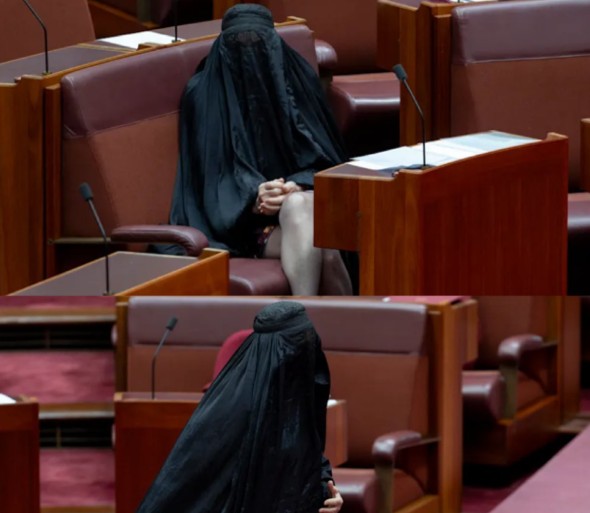An Australian far-right assemblyman has sparked outrage after showing up in the country’s Senate wearing a burqa, in what many are calling an instigative political trick.
Pauline Hanson, leader of the anti-immigration One Nation party, entered the chamber on Monday dressed in a black robe, shocking some associates and rankling others.
Hanson has long campaigned for a public ban on the burqa and other full-face coverings.
This marks the alternate time Hanson has worn a burqa in the Senate, having first done so in 2017. Her rearmost appearance snappily drew strong responses.
BREAKING: After they blocked her motion on face coverings, Pauline Hanson walked into the Senate in a burqa.
She made her point.
And the usual suspects LOST THEIR MINDS. pic.twitter.com/IaRxd4jmMF
— Avi Yemini (@OzraeliAvi) November 24, 2025
A Greens senator labelled the act as “racist,” while an independent colleague criticised it for “disrespecting the faith” of Muslim Australians.
Foreign Minister Penny Wong moved to suspend Hanson for the rest of the day, telling the chamber: “Whatever our own beliefs may be, the sort of disrespect you are engaging in now is not worthy of a member of the Australian Senate and it should not be allowed to stand.”
Hanson’s Burqa Stunt Causes Senate Chaos
Hanson later defended her conduct on Facebook, criticizing her Senate associates for insincerity for blocking her proposed burqa ban.
She wrote: “So if the parliament won’t ban it, I will display this oppressive, radical, non-religious head garb that risks our national security and the ill treatment of women on the floor of our parliament so that every Australian knows what’s at stake.”
She added, “If they don’t want me wearing it, ban the burqa.”
Burqa Ban Debate Sparks Wider Controversy
The contestation comes against the background of Australia’s 2021 report, which recorded that roughly 3.2 million of the nation’s 25.4 million people identify as Muslim.
Hanson’s trick has reignited heated debate over religious freedom, women’s rights, and security, pressing the deep divisions in Australian politics over artistic and religious issues.






